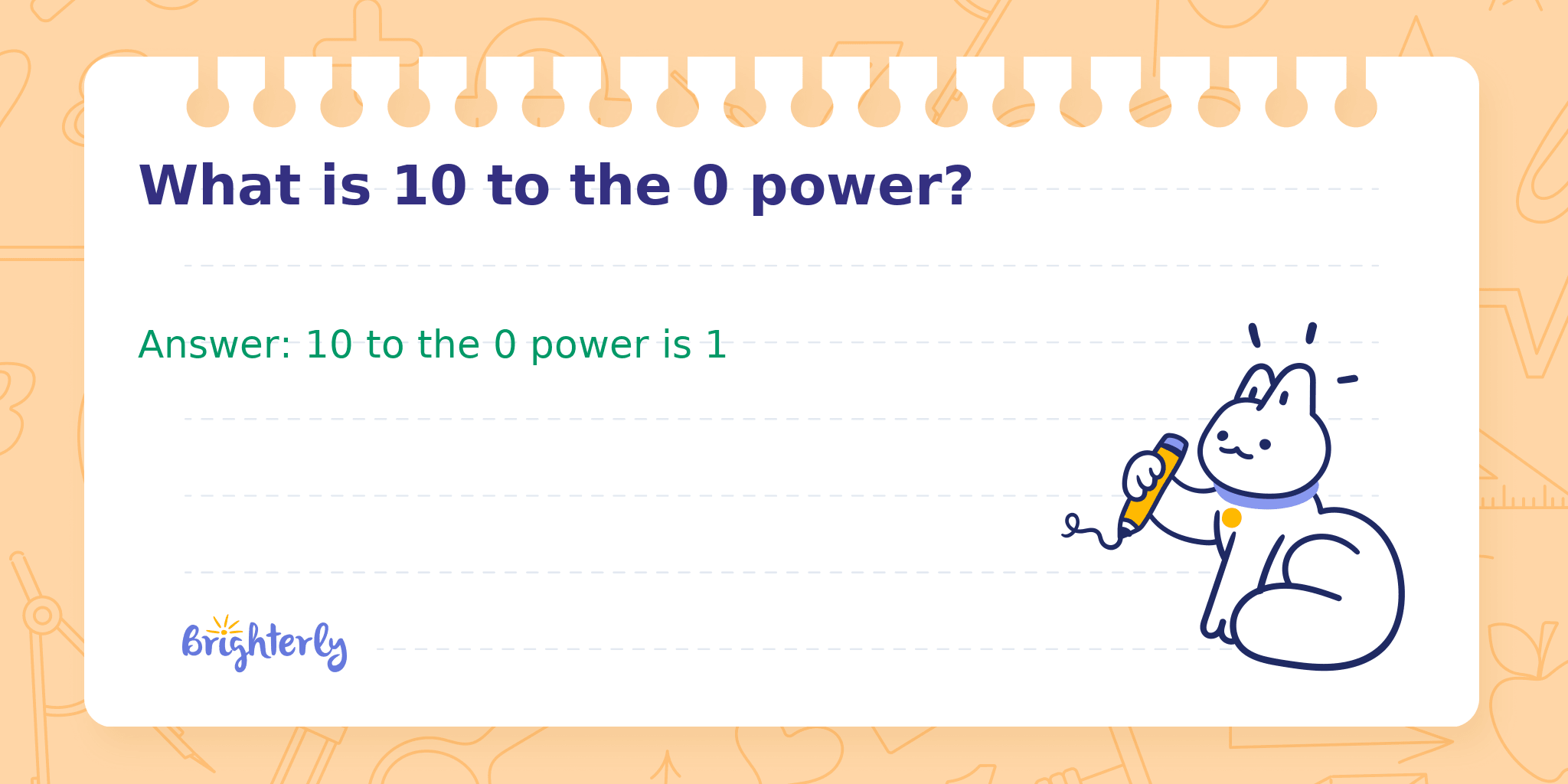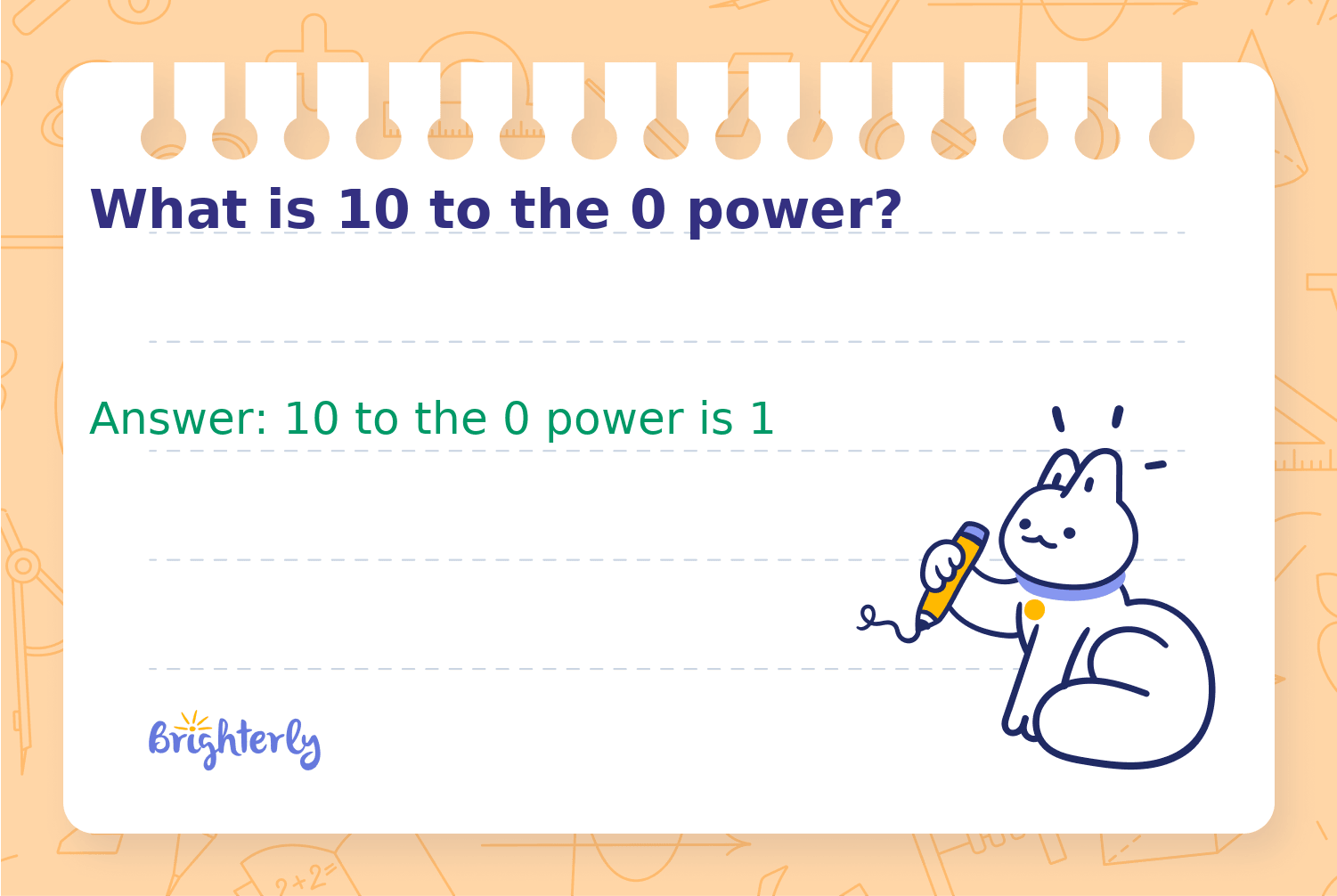
Reviewed by Laila A. Lico
What is 10 to the 0 power?
Answer: 10 to the 0 power is 1
Exponentiation is a fundamental operation in mathematics where a number, called the base, is raised to the power of an exponent. In this case, the question asks for the value of 10 raised to the power of 0. Understanding why any nonzero number to the power of 0 equals 1 is an important concept in algebra and properties of exponents.
Methods
Math Tutor Explanation Using the Laws of Exponents
This method uses the properties of exponents to show that 10 to the 0 power equals 1.
Step 1: Step 1: Recall the law of exponents that states a^n / a^n = a^{n-n} = a^0
Step 2: Step 2: Realize that a^n / a^n is always 1 for any nonzero a
Math Tutor Explanation Using Patterns in Powers of Ten
By observing the pattern of decreasing exponents, you can see how 10^0 must be 1.
Step 1: Step 1: List out powers of 10: 10^3 = 1000, 10^2 = 100, 10^1 = 10, 10^0 = ?
Step 2: Step 2: Notice that as you decrease the exponent by 1, you divide by 10 each time
Step 1:
Step 2:
Math Tutor suggests: Explore Powers, Exponents, and Their Patterns
Deepen your understanding of exponents and powers with these related questions on powers of numbers and patterns in mathematics.
FAQ on Exponents and Zero Power
Why does any nonzero number raised to the 0 power equal 1?
Because dividing a number by itself (as shown by exponent rules) results in 1, so a^0 = 1 for any nonzero a.
Is zero to the zero power also 1?
The expression 0^0 is considered indeterminate in mathematics and not generally defined.
Does this rule work for negative numbers too?
Yes, any nonzero number, even a negative number, raised to the zero power equals 1.
What is 10 to the first power?
10 to the first power, or 10^1, is 10.
Where are powers of zero used in mathematics?
Powers of zero appear in algebra, calculus, and combinatorics, especially when working with polynomials and series.


